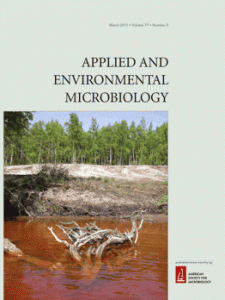Using consolidated bioprocessing, researchers at the Department of Energy’s BioEnergy Science Center have discovered how to develop isobutanol directly from cellulose. The research was led by James Liao of the University of California at Los Angeles, and the results were published in the paper titled “Metabolic Engineering of Clostridium Cellulolyticum for Isobutanol Production from Cellulose,”online in Applied and Environmental Microbiology.
 “Unlike ethanol, isobutanol can be blended at any ratio with gasoline and should eliminate the need for dedicated infrastructure in tanks or vehicles,” said Liao, chancellor’s professor and vice chair of Chemical and Biomolecular Engineering at the UCLA Henry Samueli School of Engineering and Applied Science. Plus, it may be possible to use isobutanol directly in current engines without modification.”
“Unlike ethanol, isobutanol can be blended at any ratio with gasoline and should eliminate the need for dedicated infrastructure in tanks or vehicles,” said Liao, chancellor’s professor and vice chair of Chemical and Biomolecular Engineering at the UCLA Henry Samueli School of Engineering and Applied Science. Plus, it may be possible to use isobutanol directly in current engines without modification.”
According to Liao, when compared to ethanol, isobutanol is a better candidate to replace gasoline because it has an energy density, octane value and Reid vapor pressure that is closer to gasoline.
Producing fuels from cellulose is much harder than corn or sugarcane and takes several steps. So Liao and postdoctoral researcher Wendy Higashide of UCLA and Yongchao Li and Yunfeng Yang of Oak Ridge National Laboratory developed a strain of Clostridium cellulolyticum, a native cellulose-degrading microbe, that could synthesize isobutanol directly from cellulose. The work was based on earlier work at UCLA where the team build a synthetic pathway for isobutanol production.
While some Clostridium species produce butanol, these organisms typically do not digest cellulose directly. Other Clostridium species digest cellulose but do not produce butanol. None produce isobutanol, an isomer of butanol – until now.
While there were many possible microbial candidates, the research team chose a genetically engineered strain of Clostridium cellulolyticum, which was originally isolated from decayed grass. The team’s strategy exploits the host’s natural cellulolytic activity and the amino acid biosynthetic pathway and diverts its intermediates to produce higher alcohol than ethanol. The team believes that this research sets the stage future studies that will likely involve genetic manipulation of other consolidated bioprocessing microorganisms.

